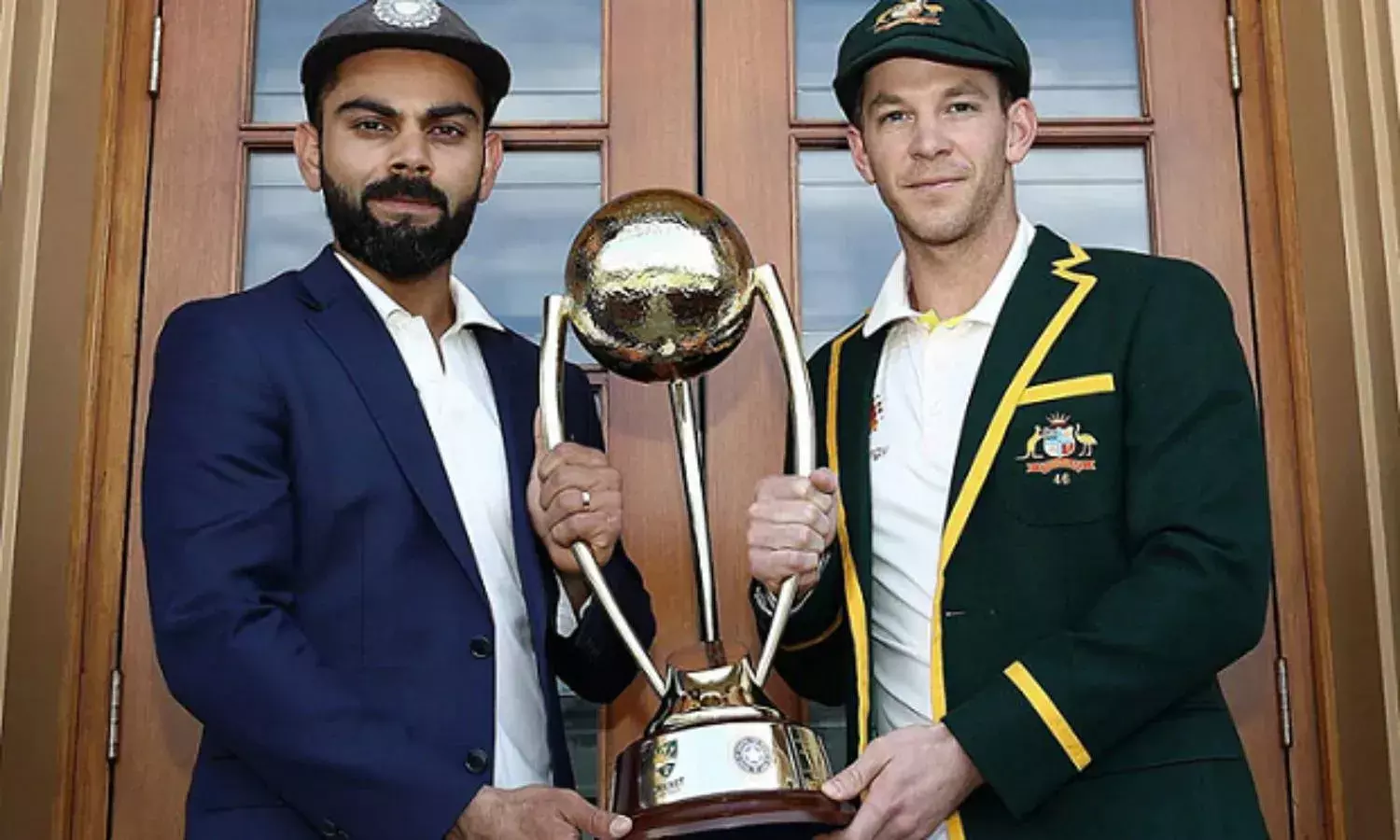India’s Task Cut Out Against Formidable Australian Pace Attack
With the first Test on Thursday, the focus is on Kohli yet again

“I think facing the three big quicks, I know what hard work it is. If they can put Virat Kohli under enough pressure... everybody in the world is a person, a human.”
Travis Head sounded a warning to India ahead of the Test series citing the Aussie quicks, who have been drowned in the fervour created by India’s own pace attack. Head reminded the Indians that Starc, Cummins and Hazlewood were good enough to dethrone Kohli from the perch Indian fans have placed him on.
It is surprising that a series between India and Australia, in Australia, is headlined by India's fast bowlers. Such has been the show the seamers put up in South Africa and England, matching the hosts’ quicker bowlers wicket for wicket.
And now the quartet of Jasprit Bumrah, Ishant Sharma, Mohammad Shami and Bhuvneshwar Kumar is believed to be good enough to give India their first ever series win in Australia.
One major factor is ignored in this conclusion, though – the potency of Australia's own pace bowling. Carried by Mitchell Starc, Pat Cummins and Josh Hazlewood, these are the quicks that devoured the England side 4-0 in the Ashes less than a year ago.
It would be presumptuous to believe that India are favourites to win this series, but in the absence of David Warner and Steven Smith the buzz is indeed that India can pull off a win. This theory, however, overlooks the fact that India's batsmen have a record of being susceptible to pace themselves.
Besides the question of India’s bowling against Australia’s depleted batting, it is this contest that could decide the series.
In the two series away from home this year, in England and South Africa, India's batsmen have struggled to spend time at the crease, with Virat Kohli being the sole pillar in the lineup. The others, including the ever reliable Cheteshwar Pujara, Ajinkya Rahane and Murali Vijay had a horrendous time.
It is fair to say that India lost the series in South Africa and England because their batting failed to live up to the promise shown by their bowlers.
Justifiably perhaps, the focus is on Kohli yet again, with the series set to begin on Thursday.
Australia, on the other hand, have survived primarily because of their relentless pace attack. Hazlewood, Starc and Cummins have been beasts at home in Test cricket. Since 2015, the trio have picked up 77, 68 and 23 wickets at averages of 25.12, 27.36 and 24.65.
Cummins, who made a sensational comeback after a long lay-off owing to injury, has become an integral part of the Aussie attack, and on the bouncy, seaming wickets down under he will pose quite a challenge to the Indian batsmen.
What has worked for Australia's seamers is bowling in partnerships. “That was the key last year, the partnerships. We always talk about batting in partnerships. But the way we bowled it wasn't about any individual, we all took 20-wickets plus the whole summer. Partnerships are a big one for us, always bowling for the guys following you. We're all leaders in our own right,” said Hazlewood in a press conference ahead of the first Test.
That the pace trio have great understanding among themselves is further detrimental to Indian batsmen who are struggling to put up worthwhile partnerships. While the ball tampering saga had put the Aussies seamers in bad light, the numbers they’ve racked up don’t owe to maintaining the ball illegally with an external substance alone!
“If we can make some early inroads in this first Test, it's always crucial, and the first innings. If we can get on top of them early hopefully that filters through the rest of the Test,” Hazlewood remarked. The fact that the Aussies are targeting the top order should worry India whose openers haven't been convincing at all.
The big fish, though, is Kohli. But with Justin Langer and the seamers going big-data in terms of analysing the chinks in Kohli's armour, it could only be a matter of time before they expose the minor ones here or there, and target them.



